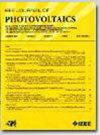全球可再生电力发展:追踪太阳能的作用(第三版)
IF 2.5
3区 工程技术
Q3 ENERGY & FUELS
引用次数: 1
摘要
2022年是光伏(PV)具有里程碑意义的一年,全球累计装机容量超过1tw。到2022年,光伏发电占全球新装机容量的56%,这是该指标连续第二年超过50%。非水力可再生能源发电(太阳能、风能、潮汐能、地热能和生物质能)的总贡献在历史上首次与水力发电相当。然而,无碳发电来源(水电、核能和可再生能源)的总组合保持在总电力的38%左右,总发电量的年增长率(2%)平衡了太阳能(25%)和风能(14%)的大幅增长。在2021年首次发表1990-2020年的数据之后,这篇年度文章将继续从多个来源收集信息,并系统地呈现给IEEE JPV的读者作为方便的参考。今年,我们首次公布了存储容量增长的数据。我们发现固定式电池储能的增长现在超过了抽水蓄能的增长。然而,与电动汽车电池存储的增长相比,同样的年度投资在新的固定电池上是很小的。本文章由计算机程序翻译,如有差异,请以英文原文为准。
Global Progress Toward Renewable Electricity: Tracking the Role of Solar (Version 3)
2022 was a milestone year for photovoltaics (PV), with cumulative installed global capacity exceeding 1 TW. PV represented 56% of newly installed global electricity generating capacity for 2022, the second year in a row that this metric exceeded 50%. The combined contributions of nonhydro renewable electricity generation (solar, wind, tidal, geothermal, and biomass) was comparable to that of hydropower for the first time in history. However, the total combination of carbon-free generation sources (hydro, nuclear, and renewables) stayed constant at ∼38% of total electricity, with the annual growth in overall generation (∼2%) balancing the large fractional growth in solar (25%) and wind (14%). Following its initial publication in 2021 with 1990–2020 data, this annual article will continue to collect information from multiple sources and present it systematically as a convenient reference for IEEE JPV readers. This year, for the first time, we present data on the growth of storage capacity. We find that growth of stationary battery storage now exceeds growth of pumped hydropower storage. That same annual investment in new stationary batteries, however, is small compared to the growth of battery storage in electric vehicles.
求助全文
通过发布文献求助,成功后即可免费获取论文全文。
去求助
来源期刊

IEEE Journal of Photovoltaics
ENERGY & FUELS-MATERIALS SCIENCE, MULTIDISCIPLINARY
CiteScore
7.00
自引率
10.00%
发文量
206
期刊介绍:
The IEEE Journal of Photovoltaics is a peer-reviewed, archival publication reporting original and significant research results that advance the field of photovoltaics (PV). The PV field is diverse in its science base ranging from semiconductor and PV device physics to optics and the materials sciences. The journal publishes articles that connect this science base to PV science and technology. The intent is to publish original research results that are of primary interest to the photovoltaic specialist. The scope of the IEEE J. Photovoltaics incorporates: fundamentals and new concepts of PV conversion, including those based on nanostructured materials, low-dimensional physics, multiple charge generation, up/down converters, thermophotovoltaics, hot-carrier effects, plasmonics, metamorphic materials, luminescent concentrators, and rectennas; Si-based PV, including new cell designs, crystalline and non-crystalline Si, passivation, characterization and Si crystal growth; polycrystalline, amorphous and crystalline thin-film solar cell materials, including PV structures and solar cells based on II-VI, chalcopyrite, Si and other thin film absorbers; III-V PV materials, heterostructures, multijunction devices and concentrator PV; optics for light trapping, reflection control and concentration; organic PV including polymer, hybrid and dye sensitized solar cells; space PV including cell materials and PV devices, defects and reliability, environmental effects and protective materials; PV modeling and characterization methods; and other aspects of PV, including modules, power conditioning, inverters, balance-of-systems components, monitoring, analyses and simulations, and supporting PV module standards and measurements. Tutorial and review papers on these subjects are also published and occasionally special issues are published to treat particular areas in more depth and breadth.
 求助内容:
求助内容: 应助结果提醒方式:
应助结果提醒方式:


